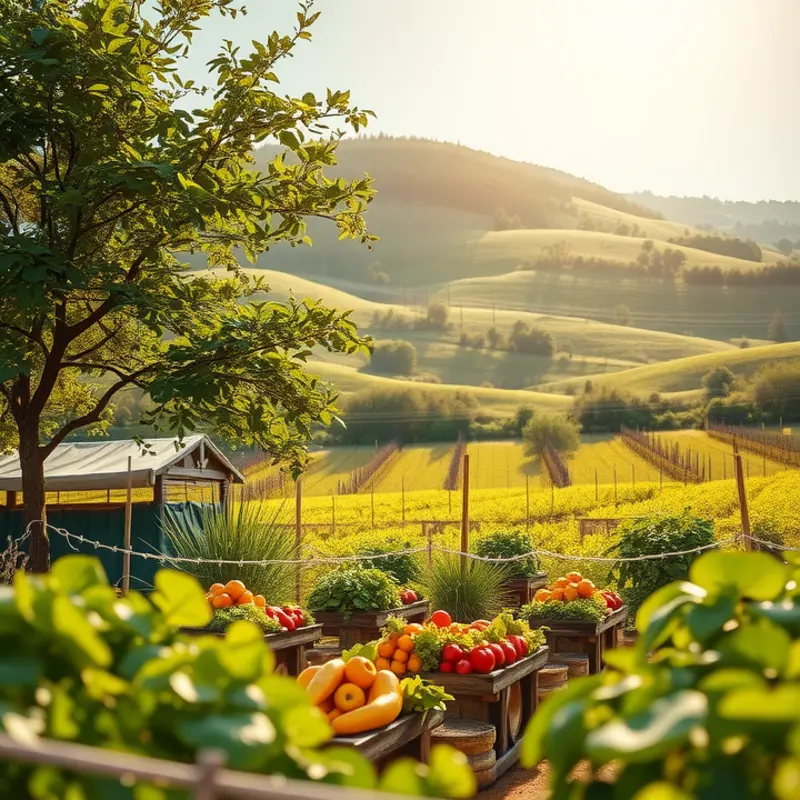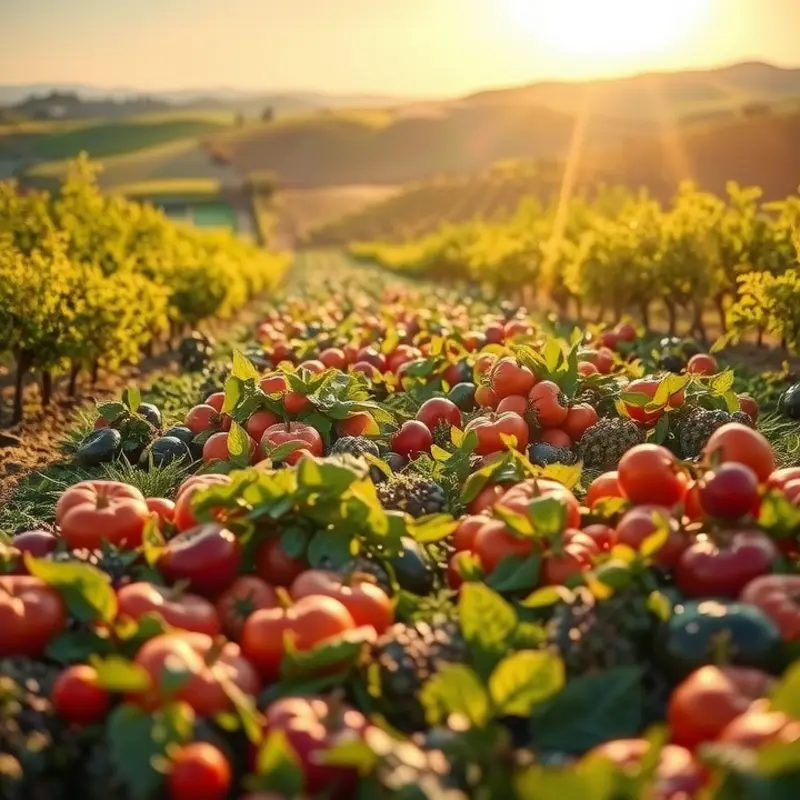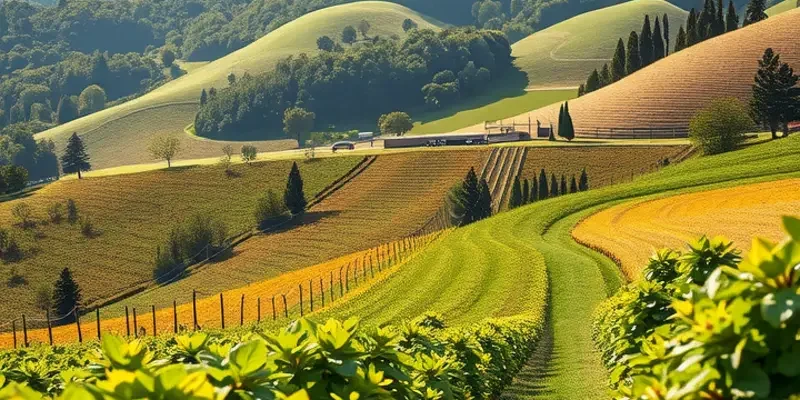Ancient pilgrimage routes were not only paths to spiritual enlightenment but also corridors of culinary exchange. As pilgrims journeyed across diverse landscapes, they encountered unique food traditions that enriched their experiences. From the fragrant spices of the Middle East to the hearty fare in European sanctuaries, the foods shaped by centuries of travelers reveal fascinating stories and ingredients woven into the cultures they traversed. Join us on a flavorful exploration of these historic paths.
The Culinary Tapestry of the Camino de Santiago

The Camino de Santiago offers pilgrims a unique culinary experience that mirrors the cultural mosaic of Spain itself. From the verdant landscapes of Galicia to the rolling vineyards of La Rioja, each step on this ancient pilgrimage is accompanied by a culinary discovery, rooted deeply in local heritage and agricultural practices.
At the core of these culinary offerings is the famed Pulpo a la Gallega, an iconic dish that exemplifies Galicia’s close ties to the sea. Fresh octopus is boiled to tender perfection and garnished with olive oil, salt, and paprika—a meal both simple and profound in its authenticity. The dish’s minimalism highlights the quality of the local octopus, seasoned with ingredients that have been used for generations. This taste of the sea provides pilgrims a moment to pause and reflect on the journey’s maritime influences.
Another transformative gastronomic experience can be found in the Tarta de Santiago, a dessert that embodies both history and tradition. This almond cake, marked with the Cross of Santiago, not only satisfies the sweet cravings of weary travelers but also connects them with centuries of pilgrimage lore. Its creation involves finely ground almonds, eggs, and sugar, resulting in a cake that is rich yet light, much like the spiritual insights gained along the Camino.
As travelers venture into the region of La Rioja, they encounter vineyards stretching as far as the eye can see. This fertile region is acclaimed for producing robust wines that complement the hearty cuisine of the area. The wines of Rioja, renowned for their depth and complexity, become companions on this journey. Their flavors are mirrored in the rich stews and roasted lamb dishes that sustain pilgrims both physically and spiritually.
These food traditions not only serve to nourish the body but also subtly echo the pilgrimage itself—a series of small, deliberate acts that collectively create something powerful and transformative. Amidst the physical challenges of the Camino, the ritual of meals becomes a meditative space where travelers can bond, sharing stories over a shared table laden with history.
The Camino de Santiago reminds us that food is more than sustenance; it is an integral part of the journey. Each dish tells a story, offers comfort, and invites contemplation. The regional ingredients, whether they are harvested from the lush ocean, the aromatic almond orchards, or the rich soils of Spain’s wine country, keep alive the traditions and tales of all who have walked before.
Exploring these tastes along the Camino might also inspire pilgrims to delve into sustainable and eco-friendly eating practices once they return home, reflecting on the lessons learned from centuries-old culinary arts. For tips on how to implement such practices in everyday life, consider these eco-aware cooking strategies: Eco-Aware Cooking Strategies.
Spice Routes: The Flavors of the Hajj

The Hajj, an ancient pilgrimage to Mecca, offers a tapestry of flavors and culinary practices influenced by the myriad of cultures converging for this holy journey. The pilgrimage is not just a religious endeavor; it is also a convergence of culinary traditions, each adding a vibrant thread to the rich tapestry of the Hajj’s shared experiences.
Among the dishes that exemplify the diverse nature of the Hajj is Kabsa, a fragrant rice dish commonly infused with an enticing blend of saffron and cardamom. These spices, renowned for their aromatic and flavorful qualities, have journeyed along the spice trade routes to blend seamlessly with local ingredients. Saffron, with its golden hue, brings a subtle sweetness and rich color, enhancing the rice and creating a sensory feast for pilgrims.
Harees, another popular dish, is a comforting porridge of wheat and meat, slow-cooked and spiced to perfection. Its preparation requires the careful balance of spices, including cardamom, which imparts a warm, slightly sweet essence, and reflects the touch of different cultures and regions that have influenced this dish over time. The communal aspect of preparing and sharing Harees mirrors the collective spirit of the Hajj, where food becomes a medium of unity and fellowship.
Spices have always played a pivotal role in the culinary traditions of the Hajj, acting as both preservers of food and enhancers of flavor. With temperatures soaring in the desert plains of Saudi Arabia, spices like cumin and coriander not only flavor the food but help preserve it during long journeys. Their integration into the pilgrimage meals signifies the ancient wisdom shared among diverse groups, stemming from generations of travelers who understood the delicate balance of flavor and sustenance.
The markets around Mecca offer a glimpse into the celebratory fusion of cultures. Pilgrims bring with them unique ingredients from their homelands, each contributing to a culinary mixing pot where dishes evolve through shared experiences and communal meals. Amid the vibrant stalls, one can find an abundance of dates, nuts, and dried fruits, all staples of the pilgrim diet, providing energy and nourishment.
The culinary traditions observed during the Hajj are not static; they continually adapt and assimilate influences from around the globe. This evolution is a testament to the enduring spirit of the pilgrimage. An excellent resource on how culinary traditions adapt and thrive under such influences can be found here, offering insights into how trading ports have historically shaped global cuisines.
Ultimately, the flavors of the Hajj encapsulate the core essence of the pilgrimage itself—unity in diversity. As pilgrims gather and share these gastronomic experiences, they partake in a journey that nourishes both the body and soul. Such shared meals provide more than sustenance; they are fragrant reminders of faith, fellowship, and the timeless narrative of travelers spanning the globe, united by a common spirit.
Final words
The intersection of spirituality and food along ancient pilgrimage routes reveals a beautiful tapestry of culinary heritage. Each bite carries with it centuries of tradition, connections, and flavors that tell stories of communal experiences and cultural exchanges. Food becomes a bridge, uniting the varied landscapes and peoples encountered along these paths with a sense of belonging and nourishment. As we explore these culinary traditions today, we gain insight into not just what is consumed, but the cultural identities shaped over time. So next time you take a culinary journey, consider the paths that have come before and the rich flavors they continue to inspire.








